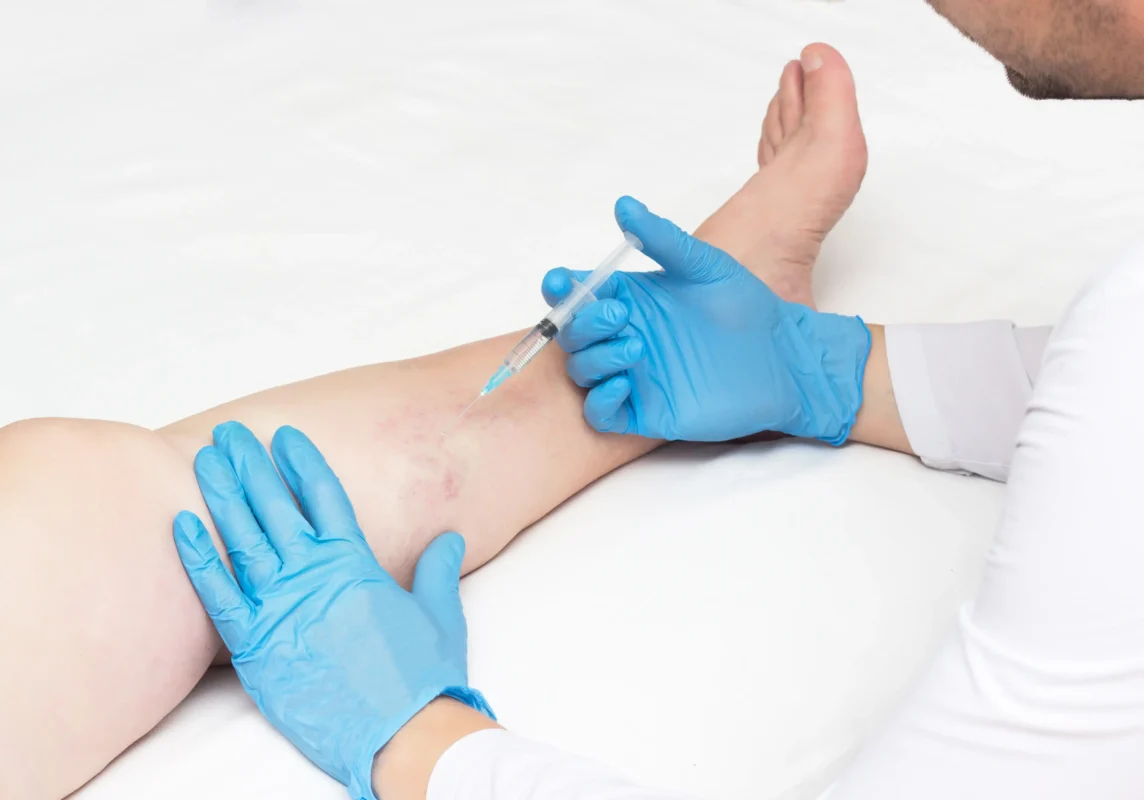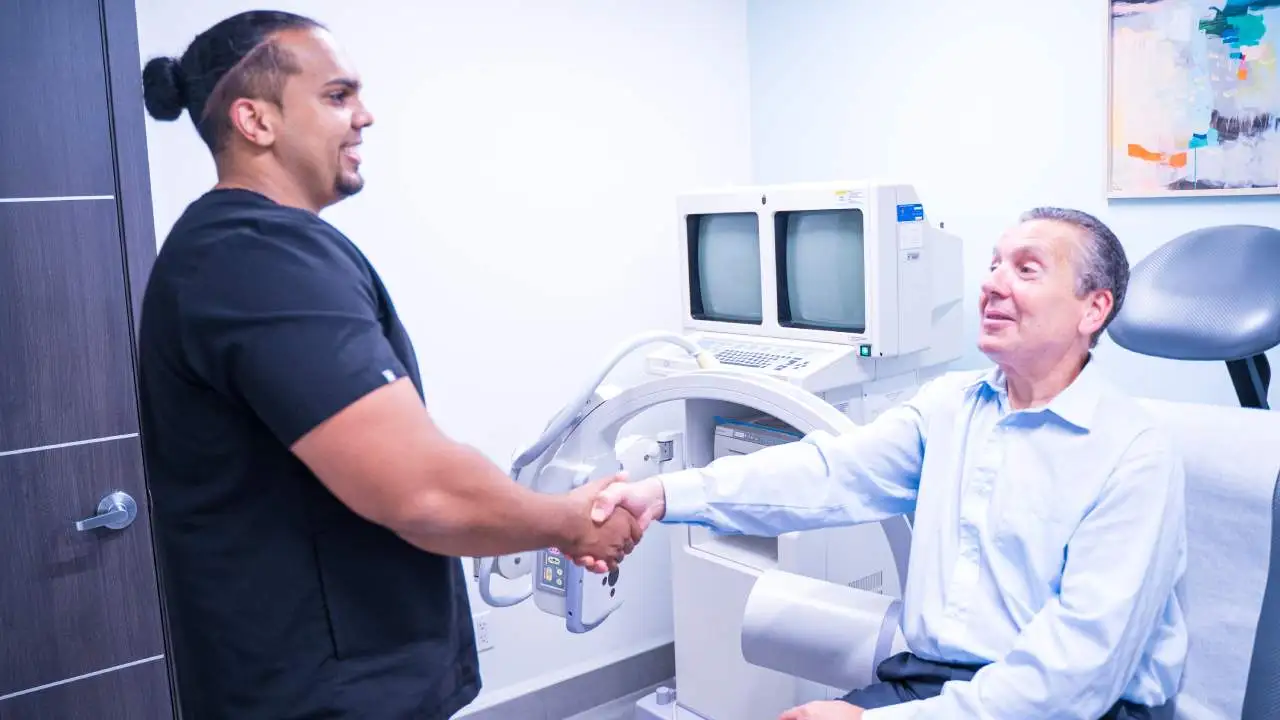How much does vein mapping cost?
Vein mapping is an ultrasound guided procedure used to diagnose vein problems. The ultrasound allows the doctor to see the deep veins and blood vessels in the body and determine the cause of the problem.
Vein mapping is recommended if you have any symptoms of vein problems, such as pain, swelling, or cramping in your legs — these symptoms indicate the possibility of chronic venous insufficiency. CVI is a condition in which the veins are not able to pump blood back to the heart efficiently. This can cause the veins to become enlarged and varicose. Vein mapping can help to diagnose CVI and determine the best course of treatment.

The cost of vein mapping varies depending on the individual case. Your doctor will determine if vein mapping is necessary and provide you with a cost estimate. If you have CVI, vein mapping can help to determine the best course of treatment.
Vein Treatment Clinic is a group of state-of-the-art vein treatment clinics with offices in New York, Long Island, New Jersey, Maryland, and California. Our vein doctors use cutting-edge ultrasound diagnostic techniques to visualize the root cause of your vein problems, following which they curate a personalized treatment plan, which may include ultrasound-guided sclerotherapy, radiofrequency ablation, or others.
If you’re in New York, you can find our vein treatment clinic in Midtown Manhattan, a short walk from the Empire State Building. We provide a complete breakdown of your vein mapping and treatment cost in advance, so you’re not taken by surprise later. We also offer hassle-free insurance verification — please schedule an appointment to claim your hassle-free insurance verification!

What is the procedure for vein mapping?
Vein mapping is a painless procedure. During the procedure, a gel will be applied to your skin. A special wand will then be used to take pictures of your veins. Your vein doctor will interpret these results to determine if blood is flowing in the correct direction — towards your heart. It will also allow them to identify the diseased saphenous vein responsible for chronic venous insufficiency and other vein problems.
What can be done about venous insufficiency?
Venous insufficiency is a condition in which the veins are unable to pump blood back to the heart efficiently. This can cause blood to pool in the veins, leading to varicose veins, deep vein thrombosis, and other serious health problems. Venous insufficiency is a common condition that affects about one in every five adults. It is more common in women than men.
There are a few things that can be done to help manage the symptoms of venous insufficiency. Wearing compression stockings can help to reduce swelling and pain. Exercising and elevating your legs when possible can also help. However, the only way to truly treat chronic venous insufficiency is through minimally invasive vein treatments, such as radiofrequency ablation, endovenous laser ablation, and VenaSeal.
Radiofrequency ablation is a safe and effective treatment for venous insufficiency. The procedure is done under local anesthesia and only takes a few minutes. During the procedure, a small catheter is inserted into the vein. Radiofrequency energy is then used to heat the vein, which causes it to collapse and seal shut. Other minimally invasive treatment options may use laser energy or medical adhesives to seal the diseased deep vein.
If you are suffering from venous insufficiency, don’t wait to get treatment. Minimally invasive vein treatments can help you get back to living your life without pain or discomfort — contact your board-certified vein doctors for a diagnosis and treatment plan.
What are the warning signs of deep vein thrombosis?
Deep vein thrombosis (DVT) is a serious condition that occurs when a blood clot forms in one of the deep veins of your body, usually in your legs. A DVT can cause serious health problems, including pulmonary embolism (PE), which is when the blood clot breaks free and travels to your lungs. The risk of deep vein thrombosis is particularly high amongst individuals with chronic venous insufficiency. If you notice the signs and symptoms of deep vein thrombosis, you must contact your vein doctor without delay.
The warnings signs of DVT are:
- Swelling in one or both legs
- Pain or tenderness in one or both legs
- Red or discolored skin on one or both legs
- Warmth in one or both legs
If you experience any of these symptoms, it is important to seek medical attention immediately as DVT can be a very serious condition.
What are the best minimally invasive treatment options for vein disease?
There are a number of minimally invasive procedures that can be used to treat vein disease, including radiofrequency ablation, endovenous laser ablation, venaseal, clarivein, sclerotherapy for spider veins, and ambulatory phlebectomy for superficial varicose veins.
- Radiofrequency ablation is a minimally invasive treatment option that is often used for the treatment of chronic venous insufficiency. This treatment involves the use of radiofrequency energy to heat and destroy the problematic veins. This treatment is typically very effective and has a shorter recovery time than more traditional treatments.
- Endovenous laser ablation is another minimally invasive treatment option that is used for the treatment of deep vein disease. This treatment involves the use of a laser to destroy the problematic veins. This treatment is typically very effective and has a shorter recovery time than more traditional treatments.
- Venaseal is a minimally invasive treatment option that is used to treat vein disease by sealing the veins shut. This treatment minimizes the risk of heat damage to the surrounding tissues, but it’s not currently covered by all major insurance plans.
- Sclerotherapy is a minimally invasive treatment option that is used to treat spider veins. This treatment involves the injection of a solution into the spider veins, which causes them to shrink, collapse, and get metabolized by the body.
- Ambulatory phlebectomy is a minimally invasive treatment option for treating superficial varicose veins. This treatment involves removing the varicose veins through small incisions in the skin.
The best treatment option for you will depend on the specific vein problem you are experiencing. For example, if you have chronic venous insufficiency, your doctor may recommend radiofrequency ablation or endovenous laser ablation to treat the underlying cause. If you have spider veins, sclerotherapy may be the best option to improve the appearance of your skin.
Your doctor will be able to recommend the best minimally invasive treatment option based on the specific vein problem you are experiencing.








